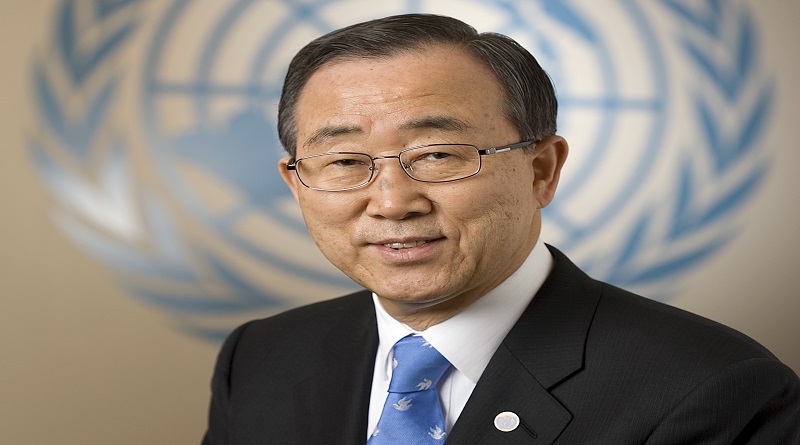Mercury: UN to hold first COP on Minamata Convention in Sept.2017
Three years and two months after the global community adopted the Minamata Convention on mercury, a global treaty that seeks to protect human health and the environment from the adverse effects of mercury, the Secretariat of the Convention has set the week of 25 September, 2017 aside to hold the first Conference of Parties to the Convention (COP1) in Geneva, Switzerland.
The September 2017 date, according to information posted on the Convention website, is however, subject to entry into force of the Convention prior to the date. 50 countries are required to ratify the Convention before it can enter into force. As of November 24, 2016, 128 countries have signed the Convention while 35 have ratified it.
The Minamata Convention was agreed at the fifth session of the Intergovernmental Negotiating Committee on mercury in Geneva, Switzerland at 7 a.m. on the morning of Saturday, 19 January 2013 and adopted later that year on 10 October 2013 at a Diplomatic Conference (Conference of Plenipotentiaries), held in Kumamoto, Japan.
The Convention draws attention to a global and ubiquitous metal that, while naturally occurring, has broad uses in everyday objects and is released to the atmosphere, soil and water from a variety of sources. Controlling the anthropogenic releases of mercury throughout its lifecycle has been a key factor in shaping the obligations under the Convention.
Major highlights of the Minamata Convention include a ban on new mercury mines, the phase-out of existing ones, the phase out and phase down of mercury use in a number of products and processes, control measures on emissions to air and on releases to land and water, and the regulation of the informal sector of artisanal and small-scale gold mining. The Convention also addresses interim storage of mercury and its disposal once it becomes waste, sites contaminated by mercury as well as health issues.
In 2001, the Governing Council of the United Nations Environment Programme (UNEP) invited the Executive Director of UNEP to undertake a global assessment of mercury and its compounds, including information on the chemistry and health effects, sources, long-range transport, and prevention and control technologies relating to mercury. In 2003, the Governing Council considered this assessment and found that there was sufficient evidence of significant global adverse impacts from mercury and its compounds to warrant further international action to reduce the risks to human health and the environment from the release of mercury and its compounds to the environment. Governments were urged to adopt goals for the reduction of mercury emissions and releases and UNEP initiated technical assistance and capacity building activities to meet these goals.
Mercury is recognized as a substance producing significant adverse neurological and other health effects, with particular concerns expressed about its harmful effects on unborn children and infants. The global transport of mercury in the environment was a key reason for taking the decision that global action to address the problem of mercury pollution was required. A mercury programme to address these concerns was thus established and was further strengthened by governments in decisions of the Governing Council in 2005 and in 2007. In the decision of 2007, the Governing Council concluded that the options of enhanced voluntary measures and new or existing international legal instruments would be reviewed and assessed in order to make progress in addressing the mercury issue.
In 2009, following extensive consideration of the issue, the Governing Council agreed that voluntary actions to date had not been sufficient to address the concerns on mercury, and decided on the need for further action on mercury, including the preparation of a global legally binding instrument. An intergovernmental negotiating committee to prepare a global legally binding instrument on mercury was therefore established, to commence its work in 2010 and conclude negotiations prior to the twenty-seventh session of the Governing Council in 2013.
As of February 2013, the designation of the Governing Council of UNEP has been changed to the United Nations Environment Assembly was provided with a detailed mandate setting out specific issues to be covered in the text of the instrument, as well as a number of other elements to be taken into account while negotiating the text.
The objective of the Convention is to protect human health and the environment from anthropogenic emissions and releases of mercury and mercury compounds and it sets out a range of measures to meet that objective. These include measures to control the supply and trade of mercury, including setting limitations on certain specific sources of mercury such as primary mining, and to control mercury-added products and manufacturing processes in which mercury or mercury compounds are used, as well as artisanal and small scale gold mining.
The text of the Convention includes separate articles on emissions and releases of mercury, with controls directed at reducing levels of mercury while allowing flexibility to accommodate national development plans.
In addition, it contains measures on the environmentally sound interim storage of mercury and on mercury wastes, as well as contaminated sites. Provision is made in the text for financial and technical support to developing countries and countries with economies in transition, and a financial mechanism for the provision of adequate, predictable and timely financial resources is defined.
It is anticipated that coordinated implementation of the obligations of the Convention will lead to an overall reduction in mercury levels in the environment over time, thus meeting the objective of the Convention to protect human health and the environment from anthropogenic emissions and releases of mercury and mercury compounds.
Kayode Aboyeji




